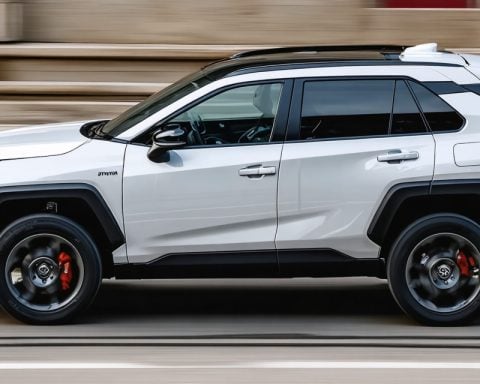As electric bikes (e-bikes) become increasingly popular among students, concerns about their safety have emerged. Collin Park from Troop 777, who is currently pursuing the Communication Merit Badge, sheds light on this growing trend.
More and more young riders are gaining access to e-bikes, which resemble motorcycles in design. These powerful vehicles can reach speeds of up to 30 mph, leading to worries among adults about reckless riding, particularly in busy traffic areas. The potential danger is significant, especially since many young riders may not always make informed decisions when navigating roads.
Collin emphasizes that there is a pressing need for both parental guidance and possible legal regulations surrounding these e-bikes. With the increase in speed and availability, it is crucial for parents to ensure that their children understand the responsibilities that come with operating such vehicles. Additionally, establishing clear regulations could help mitigate risks and enhance safety for everyone on the road.
As the conversation around e-bike safety continues, the community must consider how best to protect young riders and nearby pedestrians. The balance between the freedom e-bikes offer and the responsibility of safe riding practices must be addressed to ensure a safer environment for all.
Safety First: Navigating the E-Bike Revolution for Young Riders
As the popularity of electric bikes (e-bikes) surges, particularly among students, there is a growing concern regarding the safety implications of this trend. E-bikes, reminiscent of motorcycles, can reach impressive speeds of up to 30 mph, stirring unease among parents and communities about the risks of reckless riding, especially in high-traffic areas.
FAQs About E-Bike Safety for Young Riders
What are the main safety concerns regarding e-bikes?
The primary safety concerns include high speeds that can lead to severe accidents, particularly among inexperienced young riders. Additionally, there are worries about the ability of these riders to navigate busy streets safely.
What can parents do to ensure safety?
Parents can educate their children about the rules of the road and the responsibilities that come with riding an e-bike. Regular discussions about safe riding practices, as well as supervision, can enhance safety.
Are there any regulations regarding e-bike use for minors?
Yes, many regions are starting to implement regulations that specify age limits and helmet requirements for electric bike users. It is essential for families to be aware of local laws.
Pros and Cons of E-Bikes for Students
Pros:
– Convenience: E-bikes provide a quick and efficient means of transportation, helping students navigate busy campus areas effectively.
– Environmental Benefits: As an eco-friendly alternative to cars, e-bikes produce zero emissions, supporting sustainability.
Cons:
– Safety Risks: High speeds and lack of experience can lead to increased accidents.
– Inadequate Education: Young riders may not receive proper training or knowledge regarding traffic rules and safety protocols.
Innovations in E-Bike Safety
E-bike manufacturers are increasingly focusing on safety features. Innovations include:
– Speed Limiters: Many modern e-bikes come equipped with speed limiters that ensure the bike doesn’t exceed safer speed thresholds.
– Integrated Lights and Horns: Built-in safety features like lights and audible alarms are designed to enhance visibility and alert pedestrians.
Trends in E-Bike Usage
The rise in e-bike popularity among youth is also evident in sales trends. According to market analysis, e-bike sales increased by over 145% in the last few years, with a significant portion of buyers being younger demographics. This trend indicates a shift towards electric transportation, influenced by urbanization and the push for environmental sustainability.
Educational Initiatives for Safer Riding
To address safety concerns, community workshops and school programs focused on e-bike education are becoming common. These initiatives aim to provide young riders with essential knowledge of road safety, bike maintenance, and responsible riding behaviors.
Conclusion
As e-bikes continue to define a new mode of transportation for young riders, a collective effort is needed among parents, educators, and policymakers to ensure safety. Balancing freedom with responsibility will create a safer environment for both riders and pedestrians alike.
For more information on e-bike innovations and their impact on youth, visit eBAike.













